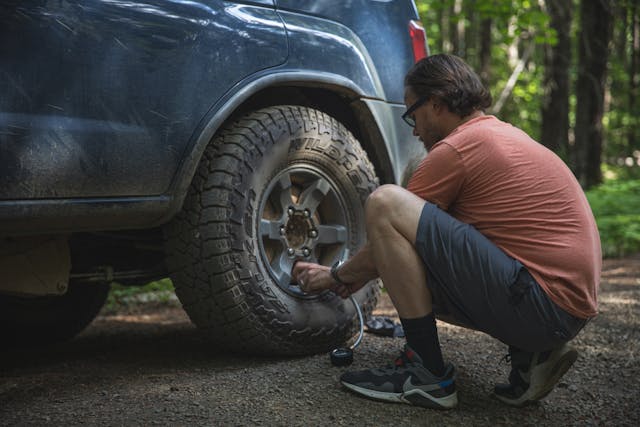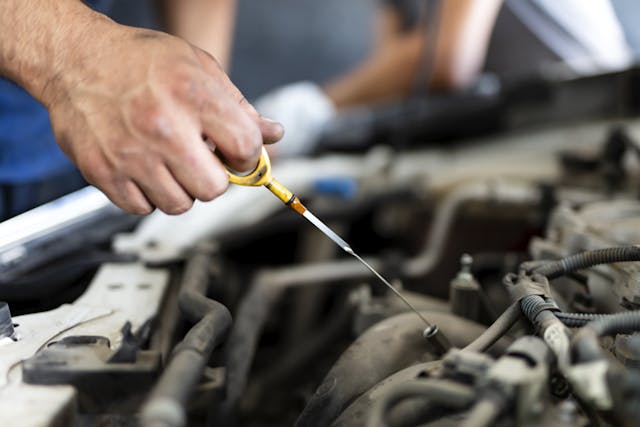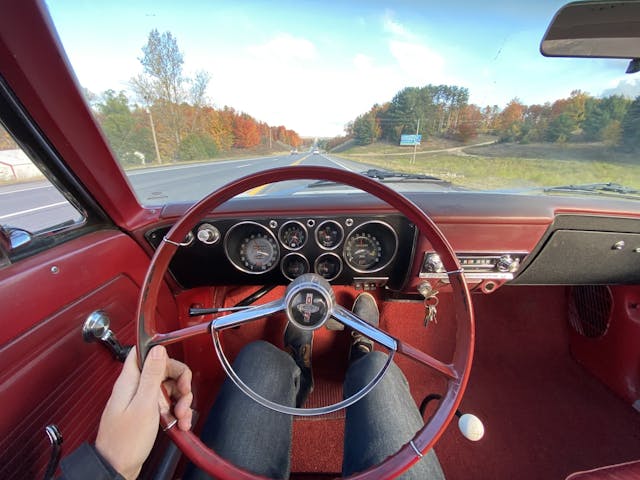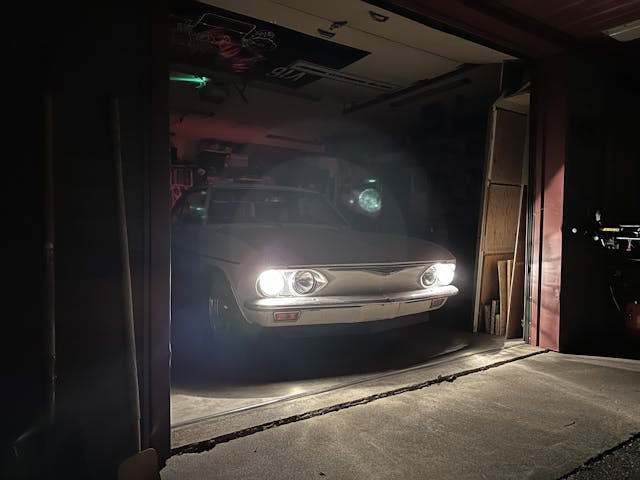Before Driving Your Vintage Car, Check These 6 Things
Getting out on the road and enjoying our vintage cars is the majority of the reason most of us own them. Driving is what it’s all about, but driving safely is always the best plan. Many vintage cars now have spent time with owners who may not have been born when their car was built; if you find yourself in that camp, you may still be learning the day-to-day and year-to-year upkeep of your vehicle. Let’s take a look at a few checks and pre-drive rituals that will keep you and your old car happy for many miles to come.
Most owners and drivers of aging cars are diligent about inspecting them, but usually only once—when they buy the vehicle. After the purchase, most slip into the assumption that “it was fine when I parked it,” which can lull you into thinking everything is—and will remain—fine. Oftentimes everything is fine, but when a critical component or system isn’t, you can put more just yourself at risk. That’s worst-case scenario, of course; at a minimum, making a habit of regular quick inspections can save a lot of frustration and towing charges.
Tires: Pressure and Condition

Tires are the only actual items that connect your multi-thousand-pound car to the road. We rely on those round rubber rings to not only grip the road surface but also to support the car. Having incorrect air pressure in the tires can produce unexpected changes in handling, cause a tire to build up heat and cause a blowout, or wear parts of the tire that aren’t designed to come in contact with the road.
Even a quick look while walking around the car is better than nothing, but make sure to check the pressure with a trusty gauge and look closer at the condition of the tread and sidewall. If you find an issue, that weekend drive you planned might get ruined, but that’s a whole lot better than finding the problem while going 55 mph and ruining a whole lot more.
Oil: Leaks, Level, and Condition

Engines live and die by the lubricants and other fluids contained within the block and heads. Just having enough oil and coolant will keep an engine alive far longer than some might think. Having clean and properly spec’d fluids will make a car run even longer and even better.
Taking a minute to pop the hood and pull the dipstick to confirm your car’s engine has the proper amount of oil is the bare minimum. Have a clean rag handy to wipe the dipstick clean and quickly inspect the oil for debris and color. A light amber is ideal, but tired engines can put a lot of combustion byproducts into oil relatively quickly, and those will turn oil darker. While you are thinking about fluids, take a peek under the car to confirm the oil leaks you might have did not get worse.
Steering: Is There Play?

A lot of people will say that old cars just have loose steering, but those people are only partially right. Vintage steering systems can feel less direct than modern designs but they should still be snug. Motion at the wheels should translate to motion at the front tires. After sliding into the driver’s seat, take a moment to observe the steering before starting the engine. This will help get an honest feel without the assistance of a power-steering pump, if your car is so equipped.
Lights

“How could anyone not notice a car as cool as mine?” We’ve all thought this while driving down the road, surrounded by homogeneous modern crossovers. The reality is a lot of drivers don’t care about vintage cars, and they have grown to expect vehicles to show daytime running lights, which vintage cars rarely have. An older vehicle can sneak up on many a modern driver, especially at dusk or in the early morning—you know, the best driving times.
That’s why it’s a good idea to do a quick walkaround or mirror check of the lights on all four corners of your car. Do your turn signals work? Has a bulb burned out? I like to turn on the lights of my Corvair before I open the garage door to see whether the headlights and turn signals work. I’ll also check the taillights—brake and running lights—in the rearview mirror, to see if they light up the back wall of the garage easily.
Brakes

Brakes, especially drum brakes, are notoriously difficult to inspect without some disassembly. One way I like to evaluate them is the hard/harder test. Before starting the engine, I push on the brake pedal with the force of a regular stop, such as I’d use when approaching a four-way stop, and hold that pressure for a moment to confirm the pedal does not sink further. After a short hold I then press harder, to mimic a panic stop, and again hold for a moment to ensure the system holds the pressure firm. I then release the pedal and ensure it returns to its correct position quickly and smoothly.
This works for both mechanical and hydraulic systems. Combine this simple test with a visual inspection of brake fluid level and condition, and you’ll have that much more peace of mind.
Throttle: Does It Stick?

The throttle is really fun to push, but more important than anything is the throttle’s return. Stuck throttles lead to bad situations. Before starting the engine, give the throttle a bump from fully closed to wide open and make sure it snaps shut quickly and without any binding. Many vintage cars use mechanical linkages or cables that can corrode or get grime in them which can slowly build up and cause problems. Best to catch such a problem while still in the garage or driveway.



See what they do on Roadkill, Roadkill Garage and Vice Grip Garage and do the opposite.
Brakes should work and throttle not sticking. This guy didn’t get the memo.
https://www.youtube.com/watch?v=5oO226PgSkg
How often do you rotate, change direction or replace your washer/dryer cardboard box under the engine?
When the recycling comes on Thursday.
I just want to see more pictures of the Spitfire.
It’s in my garage for a few weeks, wouldn’t be surprised if it’s the topic of some future stories.
Kinda missed a major “check” unless you are driving an old VW, Porsche, or Corvair. Coolant levels and hoses.
Ever been to a parade on a hot summer day and watch the early exit of a vintage ride?
If your car has wire spoke wheels, check the spoke tension every time you check the air pressure. It is quick and easy to gently tap each spoke with the handle of a screw driver. It is easy to hear if there are any loose or broken spokes, but a little more difficult to hear or feel the ones that are too tight. If you suspect tight spokes, best to slightly back off the tension with your spoke wrench. Tight spokes are more likely to break than loose ones.
From my experience with bicycle wheels I would dissagree with that. tight spokes are under tendion and stay under tendion at all times. Loose spokes are under tension when loaded (at top of wheel) and relaxed when unloaded (at bottom of the wheel) and fatigue and brake at the hub. Tight spokes never bend and so do not fatigue. I have never had a tight spoke break, but I’ve replaced a lot of loose ones. A spoke would have to be EXTREMELY over tightedned to excede the tensile strength of the spoke.
I need to proof-read better!!! Tendion?? – no – tension. Tightedned? Tightened.
Although it is true that a competent driver does not need brakes it is still a good idea to check brake fluid and clutch fluid in those cars with hufrolic clutch.
Hydrolic not hydfrolic although that sounds like fun.
You’ll only do it once!!! I have a C8 corvette parked next to my 1961 E-type in a two car garage which also is my workshop. (and yes I’m very fortunate) Well to get the corvette out I get in the passenger side and climb over the center console. I get into the seat start the vet and yap forgot to take the tender off. ( the funk is open) no real problem cuz I’ll just back up a little till I can open the driver’s door. NOPE, the vet won’t go into and gear will the funk partially open. Isn’t technically wonderful. Shut down and crawl back out to start all over again!!!! My father always said “what you don’t have in your head you have to make up for in your back”.
not sure if this has been already covered but since we drive our hobby cars a lot less, after 10 years the tires still show no wear but have aged out and might be cracking on the inside. Remember this killed Paul Walker.
Great info and pics. Thank you. Question re the Spitfire knock offs. What is the best torquing method besides whacking away with a lead hammer? Have read that about 240 foot pounds is correct and I keep looking for a spanner adapter/wrench alternative for my Dayton wheels on a V8 modified 280Z.
Check that your fuel tank is secure… On a hot August afternoon many years ago in Phoenix, I was driving my Check your gas tank supports for rust! On a hot August day many years ago, I was cruising along in my 1963 Studebaker Gran Turismo Hawk at ~70 MPH on Interstate 10. Suddenly the car decelerated. I pulled over and got out for an inspection. I was shocked to see the gas tank had been dragging on the asphalt. Turns out one of the three metal supports (two on one side, one on the other) had failed due to rust. The rust was not readily apparent to the casual observer. I loved the car, but my confidence in it was shaken. I never used it as a daily driver again.
You are so right when you say some people don’t notice or can’t appreciate the beautiful classic car that I’m driving on the main street in Atlanta aka Peachtree Road. Sometimes I figure it’s just my generation, the Baby Boomers, that enjoy these cars as they can relate to them from their youth. That’s who I often get the “shout outs“ from. My wife thinks it’s because I look like such a Bad Ass in my GM muscle cars, that people are afraid to look me in the eye or pull along beside me at a traffic light. I actually kind of enjoy that. A 73 yr. old BA in a car that looks and sounds like it should be on a racetrack or museum surely must be s sight to behold for the common civilian. I kinda like that.
Have a question but not relevant to discussion. Have 1981 Porsche 911 sc & having problems with car accelerating properly with bad hesitation & flat power band. Have always used premium brand high octane fuel. It seems all major brands now have 10% ethanol. Is this a problem for any other vintage car owners? Thanks, Don L